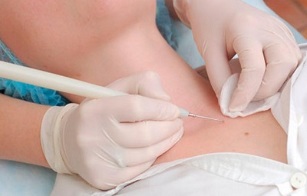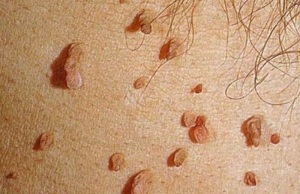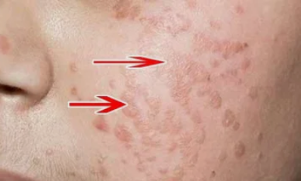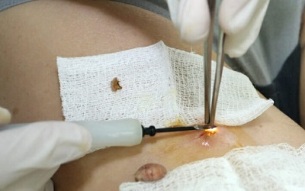
Human papillomavirus (HPV, HPV - human papillomavirus) or papilloma virus is a group of infections that includes more than 100 types of viruses, 80 of which are pathogenic to humans. According to statistics from the World Health Organization, 70% of the world's population are carriers of HPV. In most cases, the infection occurs after the onset of sexual intercourse and may be asymptomatic for a long time.
Causes of HPV infection
Symptoms of papillomavirus infection in women may include: various types of warts, flat and genital warts, cervical dysplasia. However, the most dangerous manifestation of the pathology is the development of cervical cancer. There are also data linking the development of anal, external genitalia, vaginal cancer to infection with certain types of human papillomavirus (HPV types 16, 18, 45, 56).
Transmission types:
- Sexual contact.It is the main route of transmission of human papillomavirus infection. Using a condom during sexual intercourse significantly reduces the risk of infection with the human papillomavirus, but it does not guarantee that the infection will not occur because the virus particles are very small.
- Contact and household path.The causes of infection are the use of common intimate hygiene products: towels, soap, public toilets, bath use.
- Natural childbirth.HPV can be transmitted to children who become infected when the child passes through the birth canal of an infected woman.
The source of this infection is the patient's skin cells and mucous membranes. In this case, the person may not know that he or she has become a carrier of the virus, as warts and papillomas may be invisible during microscopic and visual examination.
Predisposing factors that contribute to the development of a viral infection:
- early sexual intercourse;
- sparse sex without a condom;
- frequent abortions;
- Presence of infectious diseases of the genital organs;
- long-term use of oral contraceptives;
- reduced body immune response;
- non-compliance with personal hygiene rules;
- if your sexual partner has HPV
- exposure to frequent stressful situations;
- harmful habits.
Through pores, cracks, skin and mucous membrane microtraumas, the virus enters the basal layer of the epithelium, which ensures normal growth and regeneration of the skin and mucous membranes. Base layer cell DNA (deoxyribonucleic acid) carries information about the structure of healthy cells. The viral particle that is incorporated into the DNA changes this information, resulting in the formation of affected cells that cause symptoms of the disease during growth and division.
Symptoms of Human Papillomavirus Infection in Women

One of the possible manifestations of human papillomavirus infection is the appearance of genital warts and papillomas. These are specific formations that look like cauliflower, grape bunch or rooster comb, pink red or flesh-colored. Depending on the type and nature of the virus, they can infect human skin and mucous membranes.
Genital warts can form around or near the anus, especially if there is anal intercourse.
Papillomas can occur on the skin around the fingers, fingers, hands, around the eyes, armpits and scalp. Sometimes they also form on the soles of the feet and cause characteristic pain when walking.
This type of disease rarely degenerates into malignancy and cancer, but the formations are surgically removed to prevent the disease from developing.
Consequences of HPV infection
The human papillomavirus can cause significant growth of genital warts, papillomas, flat warts in women, which can cause discomfort, pain, and bleeding of varying severity when injured.
Eighteenth and sixteenth types of HPV are the most dangerous because they cause cancer to develop. Cervical cancer, which is believed to be associated with human papillomavirus infection, ranks second among various malignancies in women. The mortality rate reaches fifty percent.
Flat warts

The disease is characterized by the formation of flat plaques that practically do not rise above the level of the skin.
The vagina and cervical mucosa are most commonly affected.
The cosmetic defect with them is much smaller than with genital warts.
This type of pathology has a higher risk of degeneration in cancer.
Cervical dysplasia
A pathology is a change in the normal cell structure of the cervical mucosa called atypia. This gynecological condition is considered a precancerous condition and requires monitoring and intensive treatment.
The disease is in most cases asymptomatic and is detected during a daily examination by a gynecologist. Distinguishes between several degrees of dysplasia: mild, moderate, severe. The choice of treatment depends on the severity.
Cervical cancer
This is the most dangerous manifestation of the disease. Cervical cancer ranks second among tumor pathologies in women and is associated with infection with HPV types 16, 18.
The disease can occur without clinical signs or with non-specific symptoms: weakness, increased fatigue, weight loss, the appearance of spotting vaginal bleeding outside the menstrual cycle.
Methods of treating the disease
Do not self-medicate if you have signs of HPV infection, given the risk of sequelae.
In order to choose the optimal treatment tactics, it is necessary to consult a gynecologist, who, after careful examination and performing the necessary tests, will prescribe adequate therapy.
To date, no drugs have been invented to cure HPV once and for all. The main goal of treatment is to reduce the levels of the virus in the body to prevent further progression of the disease.
Main areas of therapy:
Treatment of- manifestations (warts, papillomas, dysplasia);
- antiviral therapy; Use of
- agents to increase immunity.
In the presence of papillomas, genital warts, warts, even small areas of dysplasia, it is recommended to remove them, because the presence of neoplasms increases the concentration of virus particles in the woman's body, which contributes to the further progression of the pathology.
Surgical treatment
Genital warts, papillomas, warts, and dysplasia removal methods include:
- surgical;
- cryotherapy;
- diathermocoagulation;
- laser coagulation;
- radio wave therapy;
- chemical attack.

The surgical method consists of removing the growths with a scalpel, it is the cheapest method of treatment, however, it leaves a pronounced cosmetic defect and the healing period is significantly extended. There is also a risk of secondary infection. Therefore, this type of intervention is used in emergencies.
During cryotherapy, liquid nitrogen is applied to the affected area, which freezes the pathological formation. After a few days, the papilloma or warts disappear, and a small wound forms under it, which heals in 10-14 days.
Diathermocoagulation is the application of high temperatures to the affected areas of the skin. This procedure is quite painful and requires anesthesia. The disadvantage of this method is the formation of rough scars instead of pathological formations.
During laser coagulation, exposure of the laser beam to the affected area leads to drying of the neoplasms. Instead, a dry crust forms, which after a while disappears without leaving scars. This type of treatment is the most gentle, but its high cost is considered a disadvantage.
Radiotherapy consists of exposing the affected area to radio frequency waves. With this type of treatment, there is no risk of bleeding, no severe scarring, but the disadvantage is the high cost.
The chemical method is used when there is a small formation. A special medicine is applied to the affected area. After several applications, a crust forms on the treated area, which disappears after a few days.
Drug use
Drug therapy for human papillomavirus infection includes the use of the following groups of drugs:
- antiviral drugs;
- Immunostimulants.
A long course of antiviral therapy is prescribed to reduce the levels of the virus in a woman's body and prevent it from multiplying. The medicine is used in the form of tablets and suppositories, the dose and duration of treatment are determined only by the doctor treating you.
Immunostimulants are prescribed after analysis and immunosuppression to increase the body's defenses, speed up the appearance of immune cells and stimulate the production of antibodies against the virus.
Treatment of HPV infection in pregnant women
The presence of human papillomavirus infection in a woman's body does not affect the reproductive system and is not a contraindication to pregnancy. If an exacerbation of HPV occurs during pregnancy, treatment for this condition is not performed during this period, treatment is prescribed after childbirth.
However, the woman should be monitored by a doctor throughout pregnancy. When severe discomfort develops, gentle therapies are prescribed. In extreme cases, when there is a contraindication to the delivery of the uterus to the vagina due to the progression of HPV, a caesarean section is performed.
Getting rid of HPV by folk remedies
At home, you can use folk remedies, such as herbal decoctions and infusions - for the treatment of papillomatosis, ointments - to get rid of warts, papillomas and warts.
Ways to prepare decoctions and infusions for human papillomavirus infection:
- Horse tails, nettle grass, rose hips, dandelion roots, plantain leaves are mixed in equal amounts. 3rd st. l. Add 800 ml of water to the resulting mixture, boil for 10 minutes on low heat, then leave to infuse for 3 hours. Apply 1 glass 3 times a day 30 minutes before eating.
- Oregano grass, yarrow, immortelle, St. John's wort, birch buds, nettle, calendula, legumes, nasal roots, chamomile flowers, cords, plantain leaves, celandine, linden flowers, caraway seeds, sage are mixed in equal amounts. Pour into a thermos 2 tbsp. k. l. pour the resulting mixture into 500 ml of boiling water, leave overnight. Take 0, 5 cups 4 times a day.
- Valerian root, lemon balm grass, oregano, linden flowers, hop cones, motherwort are mixed in equal amounts. Pour 1 tablespoon into a thermos. l. resulting mixture, pour 0, 5 liters of boiling water and leave to infuse for 3-5 hours. Apply 250 ml twice a day.
For the treatment of local manifestations:
- strutene sula. The juice is made from fresh leaves or purchased at a pharmacy. Before applying the product, the skin of the affected area must be steamed and a healthy area near the affected area should be treated with a fat cream. Celandine should be carefully applied to the affected skin. The procedure should be repeated every two days for a week until the pathology disappears.
- Garlic. The vegetables should be grated on a fine grater and mixed with skin cream until a viscous consistency is formed. The resulting mixture is applied to the formation zones for 2-3 hours every day for a month. After the procedure, wash the skin with soapy water.
- New walnuts. They should be crushed in a meat grinder, the resulting mixture is poured into a 0, 5 liter glass jar so as to fill 2/3, the rest of the dish is poured with kerosene. Leave to infuse for 20 days, then strain through gauze. Infusion for treatment of affected skin 2 times a day.
After treatment and clearance of HPV, the woman should see a gynecologist every six months to monitor and prevent further progression of the disease.














































































